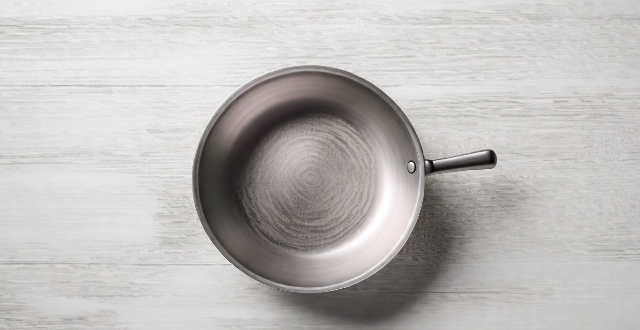The text provides a detailed overview of different types of cooking pans, highlighting their specific uses and features. It covers non-stick pans, cast iron pans, stainless steel pans, copper pans, aluminum pans, grill pans, skillets, saucepans, and griddle pans. Each type of pan is described in terms of its ideal uses and unique characteristics, such as heat conductivity, maintenance requirements, and compatibility with various cooking methods and materials. The summary emphasizes the importance of using the right pan for a given task to achieve optimal cooking results.

Different Types of Cooking Pans and Their Uses
Cooking pans come in various shapes, sizes, and materials, each designed for specific cooking tasks. Here's an overview of some common types of pans and their uses:
Non-Stick Pans
Uses:
- Sautéing vegetables without oil
- Cooking delicate foods like fish or eggs
- Low-fat cooking
Features:
- Coated with a non-stick surface that prevents food from sticking
- Easy to clean
- Not suitable for high heat or use with metal utensils
Cast Iron Pans
Uses:
- Searing steaks
- Baking bread or desserts
- Frying or browning large quantities of food
Features:
- Retains heat extremely well
- Can be used on the stovetop or in the oven
- Requires seasoning to maintain non-stick properties and prevent rust
Stainless Steel Pans
Uses:
- Boiling water
- Making sauces or reducing liquids
- Sautéing vegetables or meats
Features:
- Durable and long-lasting
- Won't react with acidic foods like tomatoes or wine
- May require more oil to prevent sticking
Copper Pans
Uses:
- Precision cooking, such as making candy or caramel
- Rapid heating and cooling for recipes requiring precise temperature control
Features:
- Exceptional heat conductivity
- Often lined with stainless steel to prevent copper from reacting with food
- High maintenance and expensive
Aluminum Pans
Uses:
- Roasting vegetables or meats
- Baking cakes or casseroles
- Stir-frying at high temperatures
Features:
- Lightweight and affordable
- Conducts heat well but not as efficiently as copper or cast iron
- Can be anodized for a non-stick surface and improved durability
Grill Pans
Uses:
- Indoor grilling of meats, vegetables, and sandwiches
- Adding grill marks to food for presentation
Features:
- Raised ridges simulate the grill marks of an outdoor barbecue
- Typically made from cast iron, stainless steel, or non-stick materials
- Good ventilation required due to smoke production
Skillets
Uses:
- Browning meats before braising or stewing
- Making pan sauces after searing proteins
- Quickly frying smaller items like hash browns or shrimp
Features:
- Flat bottom with slightly curved sides
- Available in various materials including non-stick, stainless steel, and cast iron
- Versatile for both stovetop and oven use (when oven-safe)
Saucepans
Uses:
- Preparing soups, stews, and sauces
- Boiling or simmering liquids like milk or stock
- Heating up leftovers or making small batches of pasta
Features:
- High sides compared to a skillet
- Made from materials like stainless steel, copper, or aluminum
- Comes with a lid to retain moisture and heat while cooking
Griddle Pans
Uses:
- Cooking pancakes, crepes, or flatbreads
- Grilling sandwiches or hamburgers without the mess of an outdoor grill
- Reheating pizza or toasting bread evenly
Features:
- Flat cooking surface with low sides
- Commonly made from cast iron or non-stick materials
- Heats evenly across the entire surface area
Each type of pan serves its purpose best when used according to its design and material properties. Whether you're a professional chef or a home cook, having a variety of these pans will help you tackle any recipe with confidence.